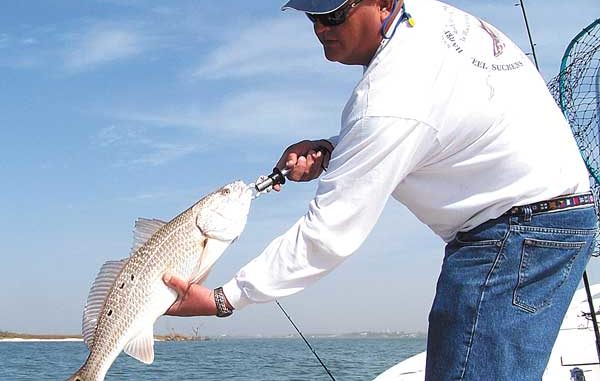
More than the weather is hot; barrier islands provide great inshore fishing for summer reds, flounder and trout.
Whether you are a fisherman who lives in the area year-round or a vacationing angler heading to the coast, the waters around Edisto, Kiawah, and Seabrook islands hold a lot of potential if you’re looking this month to score that inshore slam — redfish, speckled trout and flounder.
Not all of the hundreds of miles of inshore waters that surround the islands are equal in terms of the fish they hold. But picking the brains of local guides and fishermen will give vacationing fishermen a fairly good head start when it comes to locations, baits and tactics that are worth trying.
Whether you plan on heading to the coast with boat in tow or not, this will get you started. All that’s left is to get out there and give them a try.
South Edisto River
Barry Fontaine is a native of Edisto Island who grew up fishing and crabbing around the historic island. Today, he and his brother, Ashley, spend time chartering the offshore waters out of Edisto and working at the family business — Edisto Seafood. Fontaine offered some advice about where fishermen can catch an inshore slam this month.
“Fish Creek comes out into St. Helena Sound on the south side of Pine Island,” Fontaine said. “There’s an oyster bed that lines the creek back into the island; that’s a great place to catch both flounder and some really big (redfish). The water is 10 to 15 feet deep off the shell bank, and the (redfish) will roam the bank looking for food, while the flounder will lay right up against the edge of it.”
One of the most popular creeks on Edisto is Big Bay Creek, which comes off the South Edisto and runs beside Edisto Marina. After splitting off from Fishing Creek, it meanders back behind the beach past Edisto Island State Park and becomes un-navigable as it nears the main causeway to the island.
“Always look for old stuff along Big Bay — old rip-rap, old docks, old seawall — anything that has plenty of mud washed up on it or is covered with barnacles, fiddler crabs and oyster shells. The new stuff just won’t hold the fish like the old stuff,” said Fontaine.
Both Big Bay and Fishing Creek draw lots of bait in the summer, said Fontaine, who prefers areas where he’s not seeing bait everywhere. That way, he doesn’t have to compete with natural bait for the fish’s interest.
“If you use artificial baits, go with an eighth-ounce jighead in either white or yellow. Electric Chicken is a great color for Edisto fish. Cast around structure on the leeward side of the incoming tide. If you’re fishing on the outgoing tide, fish the outside, but I’ve found the incoming is almost always the better tide,” Fontaine said.
Live bait is a great way to catch the inshore slam. Fontaine prefers live finger mullet for trout, cut shrimp for redfish and mud minnows for flounder. All three are fished on a live-bait Carolina rig using a ¾-ounce egg sinker and two feet of leader tied to a 2/0 live-bait hook.
Otter Island
Just across the South Edisto River from Edisto Island lies Otter Island. A Heritage Preserve property, Otter Island is isolated, undeveloped, and protected on all sides by water. The island is a regular destination for tourists who come to sight-see, search for shells, and pick up scores of .50 caliber bullets the island absorbed when it was used for aircraft target practice before World War II.
Otter Island is also known for numerous tidal pools and saltmarsh ponds. These areas draw trout, redfish, and flounder with each incoming tide. Capt. Jimmy Skinner of Fontaine Charters has been fishing these waters since childhood. He will occasionally run trips over to the island, but Otter Island is more popular with the local shell-tour boats than with charter boats. Skinner said a lot of fishermen miss out on prime action simply because they are unaware of the fishing that’s available.
“During the summer, the tidal pools start drawing a lot of fish, mostly trout, but the ponds up on the island hold redfish and flounder almost year round,” Skinner said. “Artificial baits work best, because there is some hiking involved to get to the tidal ponds. This is a great destination for the angler who wants to bring the family. They can walk around and pick up shells and bullets all within sight of where the best fishing is.”
Fishermen often beach their boats to wade and fish an area, but even without a boat, it’s not hard to get a ride to Otter. Skinner said that most tour boats will come in at low tide, which is the best time to get set up. As the incoming water starts coming in over the sandbars at the surf line on the northwest corner of Fish Creek, baitfish and shrimp start filtering into the tidal flats. Skinner will fan-cast a DOA shrimp under a popping cork.
“The fish will come through in schools,” Skinner said. “Look for baitfish flipping on the surface as the trout chase them around the flats. Use the cork to really draw attention to your bait. Once the tide gets up on the flats, you can change over to an eighth-ounce jig and work some of the structure up closer to the island ’til the tide slacks.”
The salt ponds are on the south end of the island. There is some mixing of fresh water into the ponds, so catching a few largemouth bass along with flounder and redfish is not unusual. If you carry in a bucket and cast net, you can net your own bait in the creeks that feed the ponds or along the edge of the ponds. Carolina-rigging mud minnows or finger mullet and working the deeper ends of the pools is the best way to get bit.
Kiawah Island
Capt. John Ward of Affinity Charters runs many of his charters out of Kiawah Island Resort. Ward, who operates a fleet of three boats, has some great advice for vacationers who want to do a little fishing from land and also for anglers who trailer a boat to their vacation.
“One of the better shoreline spots is out at Captain Sam’s Inlet on the southwest corner of Kiawah Island,” Ward said. “People park their vehicles at the Kiawah Island County Park and walk out to the north side of the inlet. Along the surf line, there are some good shoals that trap bait. The fishing is best on the outgoing tide, which pulls bait out of the Kiawah River and washes up on those shoals.”
For anglers who own boats, Ward suggests working the same inlet further back into the Kiawah River. Trout can be caught back in the inlet working small livebottom drops anywhere from zero out to 10 feet deep. Man-made structure is also productive along the river in the form of rip-rap, docks, and pilings.
“Not all of this structure will hold fish,” Ward said. “The best structure will have six to 10 feet of water on the outside edge, even during low tide. That means looking for docks on corners or bends that give fish access to deeper water. There are a lot of these docks near the intersection of the Kiawah River with Bass Creek and Cinder Creek.”
Ward relies almost exclusively on live or dead baits during the summer, using mullet or menhaden to target slot-limit or larger reds. Like Fontaine, he rigs his baits Carolina-style with a ¾-ounce egg sinker 18 inches up the 20-pound mono leader from a 1/0 to 3/0 circle hook. He admits that many times, a bait intended for a bottom-hugging redfish comes back in the mouth of a doormat flounder, but he’s never gotten a complaint from his clients about the switch.
To get to the reds and flounder, Ward anchors his boat and pitches the bait up next to or under the structure. “If you’re not fishing close to the dock, you’re not catching fish” he said. “Ideally, you want to be under the dock between the pilings, or if you’re fishing rip-rap, have your bait lying right at the base of the rocks.”
Seabrook Island
Located between Kiawah and Edisto is Seabrook Island, which is bordered to the south by the North Edisto River and the Kiawah River to the north and flanked inland by the Bohicket River. Ward’s choices for inshore fishing around Seabrook includes an area that’s known locally as “The West Bank.”
“This area is right outside the mouth of Bohicket, the first 500 yards to the right on the North Edisto,” he said, “roughly in the area between the Point of Pines Plantation and Botany Island.”
Warmer water has the tendency to scatter speckled trout along grass points around the larger rivers. Ward will employ either a DOA shrimp or a live shrimp under a Cajun Thunder popping cork and cast near points where small feeder creeks empty out. He’ll let the bait drift around the point and over the tops of any oyster beds in the immediate area.
“The more you pop the cork, the better the presentation,” Ward said. “The trout are real aggressive in the warmer water, and when they hear those beads clacking together, it draws them up in the water column to the bait.”
Other good spots in the Seabrook area include the intersection of the Kiawah and Stono Rivers and where Bass Creek empties into the Stono. Ward suggests that the best trout fishing is during the last two to three hours of either the incoming or outgoing tides. He prefers to fish for reds and flounder for two hours on either end of low tide.

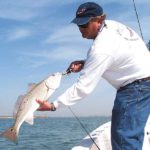
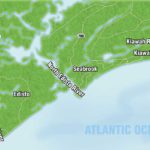
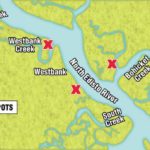
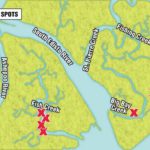
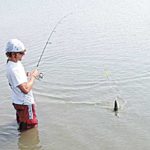
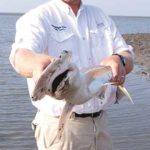
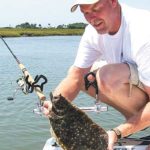
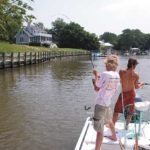
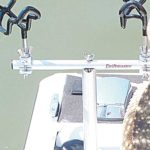



Be the first to comment